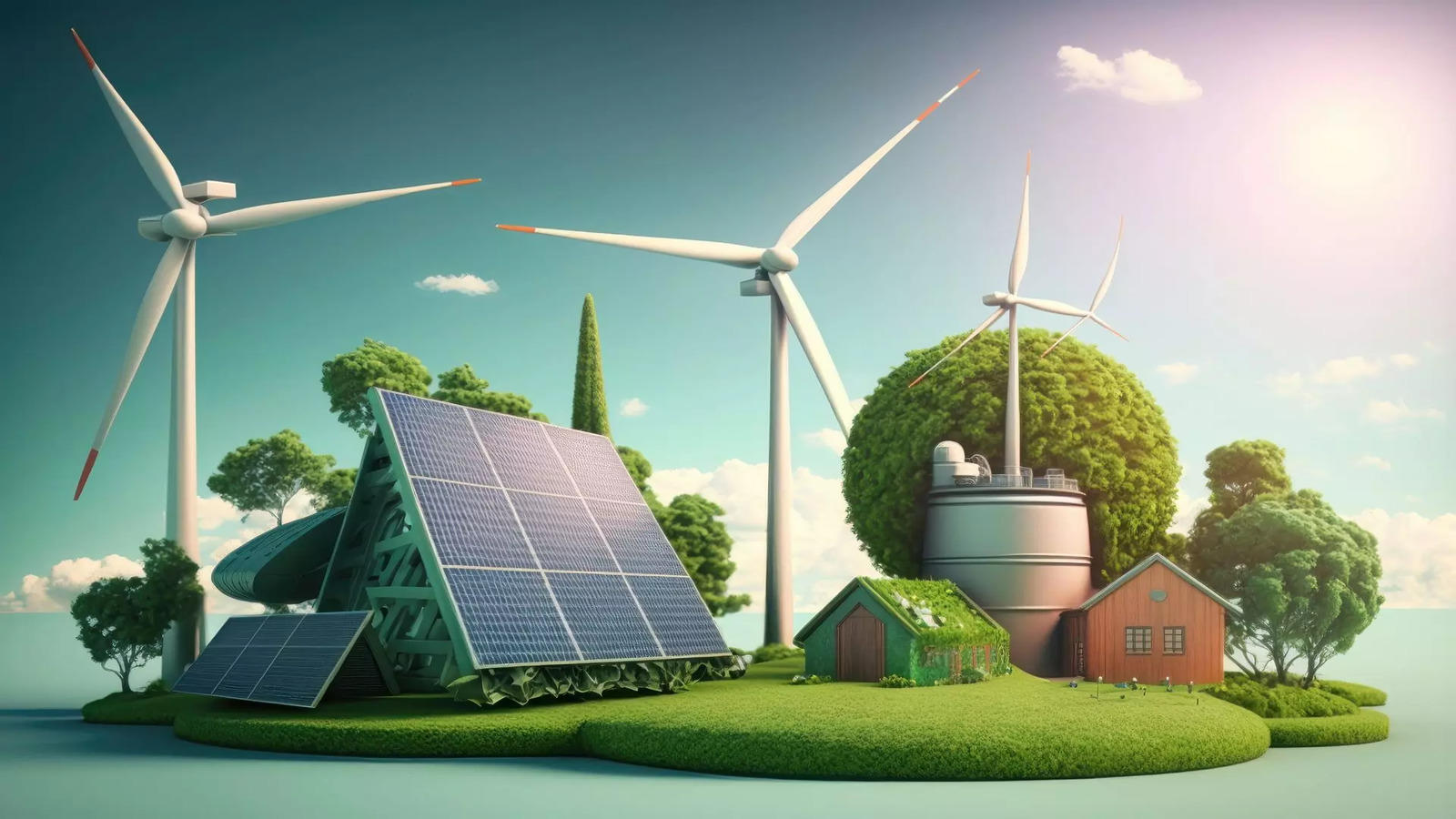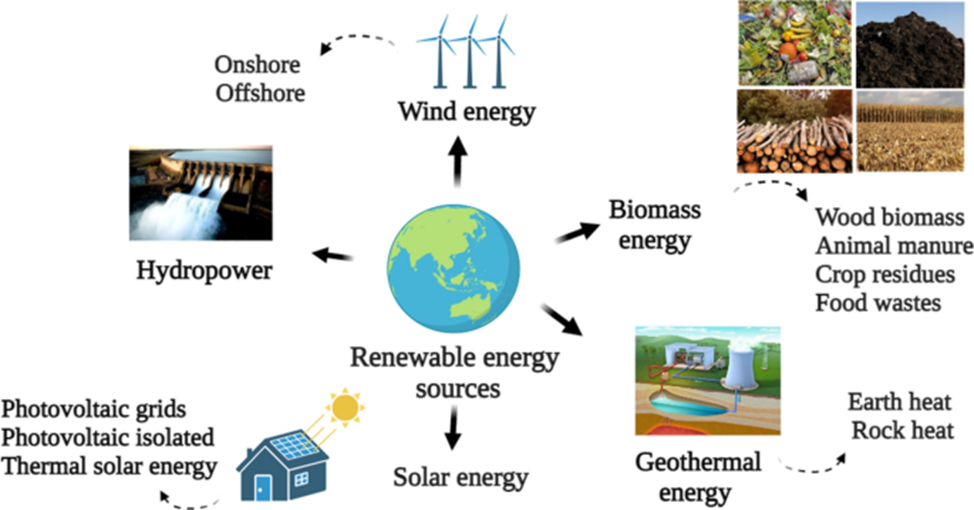Context:
India is making significant strides towards a sustainable energy future as it moves away from its dependence on fossil fuels. With an ambitious net-zero target set for 2070, the country is rethinking its energy strategy. The Asian Development Bank (ADB) highlights this transformation in its latest Asia-Pacific Climate Report, emphasizing India’s efforts to reduce fossil fuel subsidies and promote clean energy investments.
The “Remove, Target, and Shift” Strategy:
- India's approach to energy reform is guided by a strategic framework known as “remove, target, and shift.” This strategy aims to gradually eliminate fossil fuel subsidies, redirecting resources towards clean energy projects. Between 2014 and 2018, India made substantial progress in this area, achieving an impressive 85% reduction in fossil fuel support.
- The journey toward reducing fossil fuel subsidies began with the phased elimination of petrol and diesel subsidies from 2010 to 2014. Following this, tax hikes on these fuels continued until 2017. These measures not only created fiscal space for renewable energy projects but also enabled the government to invest in solar power, electric vehicles, and energy infrastructure.
Key Findings from the Asia-Pacific Climate Report:
The Asia-Pacific Climate Report serves as a comprehensive resource for understanding climate issues in the region. It underscores the need for adaptation measures and resource mobilization to support vulnerable populations facing the impacts of climate change. The report highlights the following key findings:
1. Effective Subsidy Reform: India's structured approach has led to an 85% reduction in fossil fuel subsidies in the oil and gas sector. This transition reflects the country's commitment to fostering a sustainable energy future.
2. Strategic Tax Measures: The implementation of strategic tax measures, including the cess on coal production, has provided funding for renewable energy projects and infrastructure improvements. These initiatives are critical for India’s transition to clean energy.
3. Fiscal Changes: The reduction in subsidies has allowed the Indian government to increase its support for clean energy initiatives, thereby promoting investments in solar parks, distributed energy solutions, and state-owned enterprises.
Fossil Fuel Subsidy Reforms in India:
- Since 2010, India has undertaken a comprehensive reform of its fossil fuel subsidies. The “remove, target, and shift” approach has involved carefully adjusting retail prices, tax rates, and subsidies on petroleum products. As a result, fiscal subsidies in the oil and gas sector dropped significantly, from a peak of $25 billion in 2013 to approximately $3.5 billion by 2023.
- A critical aspect of this journey was the gradual removal of petrol and diesel subsidies and the strategic increase of taxes during periods of low global oil prices. This approach created fiscal space that enabled the government to direct resources toward renewable energy initiatives, electric vehicles, and vital electricity infrastructure.
- From 2014 to 2017, tax revenues were bolstered by increased excise duties on petrol and diesel. The additional funds were then redirected to targeted subsidies, particularly for liquefied petroleum gas (LPG) access in rural communities, thereby addressing both environmental concerns and social welfare.
Role of Taxation in Supporting Clean Energy:
- From 2010 to 2017, the Government of India also implemented a cess on coal production and imports. This tax was pivotal in financing clean energy initiatives. Approximately 30% of the collections from this cess were allocated to a national clean energy and environment fund, supporting various clean energy projects and research efforts.
- Key initiatives funded by this cess included the Green Energy Corridor scheme and the National Solar Mission. These programs were instrumental in reducing the cost of utility-scale solar energy and promoting numerous off-grid renewable energy solutions.
- However, the landscape shifted with the introduction of the Goods and Services Tax (GST) in India after 2017. The cess on coal production was incorporated into the GST compensation cess, which redirected these funds to compensate states for revenue losses due to the new tax regime. This change illustrates the ongoing challenges India faces in its taxation framework as it strives to support clean energy goals while managing its fiscal complexities.
Government Initiatives and Programs:
India is advancing towards a sustainable energy future through various initiatives, including the National Green Hydrogen Mission, the PM-KUSUM scheme, and the PM Surya Ghar: Muft Bijli Yojana. These programs are designed to boost renewable energy production, enhance energy access, and empower farmers while reducing dependency on fossil fuels.
1. National Green Hydrogen Mission: This initiative aims to establish India as a global leader in hydrogen production, facilitating a transition to a cleaner energy landscape.
2. PM-KUSUM Scheme: This program supports farmers in installing solar pumps and grid-connected renewable energy projects, promoting sustainable agricultural practices.
3. PM Surya Ghar: Muft Bijli Yojana: This scheme focuses on providing free electricity through solar energy to households, thereby enhancing energy access in rural areas.
Together, these initiatives signify India's commitment to fostering a cleaner energy landscape and transitioning away from fossil fuels.
Conclusion:
India is committed to a sustainable energy future, as highlighted in the Asia-Pacific Climate Report by the Asian Development Bank. The report shows how effective India's "remove, target, and shift" strategy has been in reducing dependence on fossil fuels and encouraging clean energy investments. Programs like the National Green Hydrogen Mission and PM-KUSUM aim to help India reach its net-zero target by 2070 while building a strong energy system. By cutting fossil fuel subsidies and introducing new taxes to support clean energy projects, India is taking important steps to tackle climate change. As the country moves forward on this journey, it sets a good example for other nations, demonstrating that a strong commitment to sustainability can lead to both environmental protection and economic growth.
|
Probable questions for UPSC Mains exam: Examine the key initiatives introduced by the Indian government to promote renewable energy, such as the National Green Hydrogen Mission and PM-KUSUM scheme. How do these programs contribute to India’s goal of achieving net-zero emissions by 2070? |








